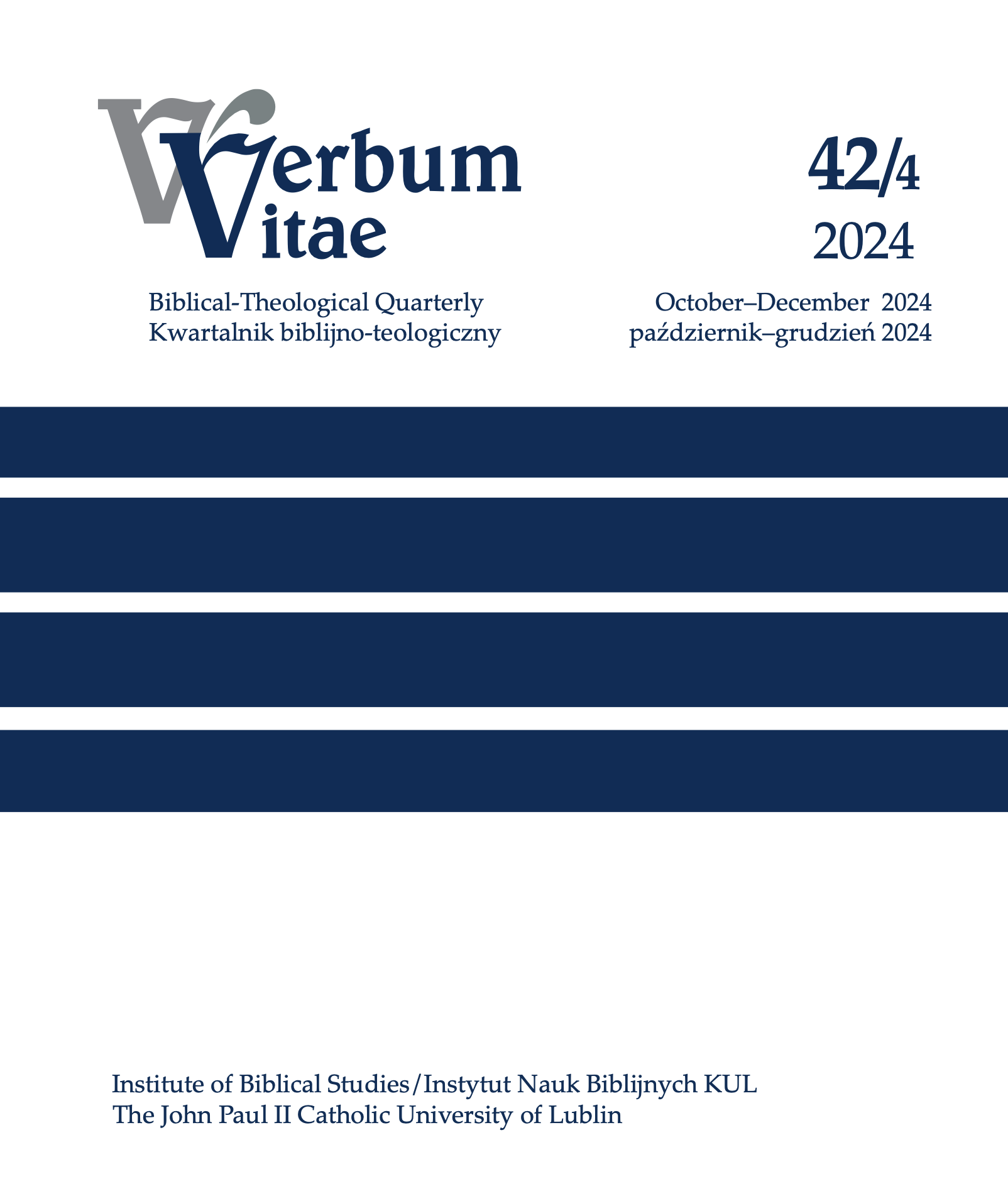Recognising the Risen Lord Through Scriptures :
The Apostle Paul as an Ideal Match for the Two
Disciples on the Way to Emmaus in Luke 24:13–35
Recognising the Risen Lord Through Scriptures :
The Apostle Paul as an Ideal Match for the Two
Disciples on the Way to Emmaus in Luke 24:13–35
Author(s): Paul SciberrasSubject(s): Biblical studies, Pastoral Theology
Published by: Katolicki Uniwersytet Lubelski Jana Pawła II
Keywords: disciples of Emmaus; Paul; crucifixion; Risen Lord; transformation; imitation;
Summary/Abstract: In the concluding chapter of his gospel, Luke culminates the “Journey to Jerusalem” with Jesusaccompanying his followers on a journey not defined by geographical or chronological elements, butrather one immersed in discipleship. In the sequel to that journey to Jerusalem, the one to Emmaus,Jesus accompanies two disciples: Cleopas and an intentionally undisclosed follower (see 24:13, 18).The end of this journey, emblematic of faith in the suffering, crucified and risen Lord reaches its zenithin the two disciples recognising Jesus in the breaking of the bread. The moment Jesus disappears fromtheir sight (24:31) elicits a reaction demonstrating the potentiality of discerning the Risen Lord evenin the “opening of the Scriptures” (24:32). This study endeavours to analyse the recognition of Jesusthe Lord in the specific mystery of his death and resurrection through the opening of Scriptures as ex-emplified by the Apostle to the Gentiles. In this vein, Paul emerges as a speculative yet paradigmatic cor-relate to the unnamed second disciple. Similar to the disciples on the road to Emmaus, Paul too travelledthe journey of recognising the Risen Lord, transitioning from a zealous persecutor of the adherents ofJesus of Nazareth and his message (see Acts 9:1–4; 22:7; 1 Cor 15:9), which had a decisive and definitiveturn in the Christophany on the Road to Damascus (Acts 9; 22; 26), to an apostle in complete acknowl-edgement of Jesus as “Lord” (see Acts 9:5; Phil 2:11; Rom 10:12), and even to a believer “who has beencrucified with Christ” (see Gal 2:19). Analogously to the two disciples, Paul too went through the samedevelopmental milestones as the two disciples, with Jesus, as it were, walking alongside him, elucidat-ing the Scriptures—from perceiving Jesus as “the accursed crucified criminal” (see Deut 21:22–23) toaffirming “Jesus is alive” (1 Cor 15:17–28) and proclaiming that “every knee shall bow and every tongueconfess that ‘Jesus Christ is Lord’” (Kyrios Iēsous Christòs)” (Phil 2:11). This trajectory renders conceiv-able for all adherents to Jesus of all times the possibility to decipher the scriptural depictions of the Lordarticulated by Moses, the Prophets, and the Scriptures (Luke 24:27, 44).
Journal: Verbum Vitae
- Issue Year: 42/2024
- Issue No: 4
- Page Range: 907-925
- Page Count: 20
- Language: English

